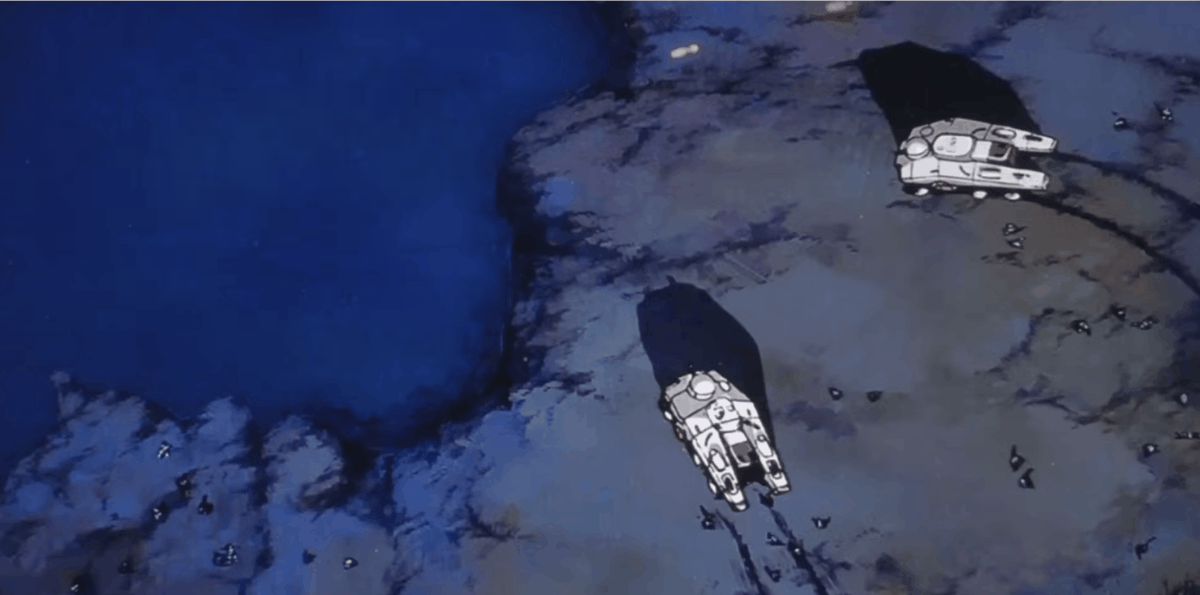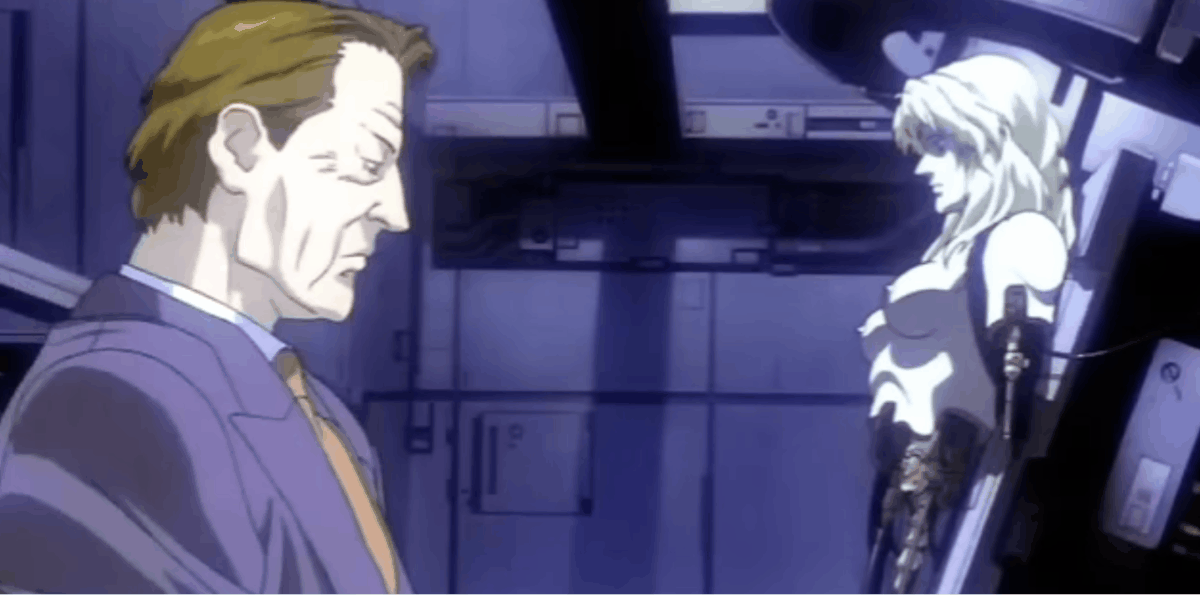They Don’t Make Anime Like They Used To

I, like many of you, grew up watching anime. I'm old enough that we didn't even call it “anime” at the time--the term didn't really start to take hold until the late 80's--but my childhood was defined by Macross and Transformers, my teens by Akira and Patlabor, Neon Genesis and Ghost in the Shell, Royal Space Force and OK you get the idea.
From my earliest TV-watching memories through my teens, I could not get enough of that shit. I once dragged my parents around Melbourne's Chinatown on a holiday just to get a Neon Genesis poster. I paid an embarrassing amount of money to import a Macross Plus soundtrack from Japan on CD. I wore home-made t-shirts with iron-on anime transfers and had an extensive collection of bootleg tapes (and later DVDs). I was in deep, but like I said, I was far from alone: many of you reading will probably have similar origin stories.
Where my story might differ from some of yours, though, is that once I hit my 20s my love for anime fell off a cliff. Not because I'd got older or somehow outgrown it; I still wanted to love anime, but as the 90's rolled into the 2000's I started finding less and less of it that really got its hooks into me. The stuff I'd been into when I was younger just didn't seem to be getting made anymore.
Which is fine– that's culture, baby. Nothing stands still, everything is always in motion. Generations ebb and flow like the tides and, like movies and music, anime was no different. I knew this, and I accepted it, but also...a part of me wishes it wasn't the case. Not for nostalgia's sake, I am not a classical statue profile pic fascist who wants to go back, I just think a lot of the stuff I watched as a kid was excellent in ways that a lot of modern anime could be, but simply doesn’t want to be, for whatever reason.
I could have simply left this blog here: An old man yelling at the clouds, pining for the Good Old Days. But that would be boring. Also, as you can probably tell by now, while I was an anime enthusiast, I am not an anime expert, so what the fuck do I even know about what trends are, what shapes them and what everyone is watching today as a result. So instead of settling into middle age and saying goodbye to anime forever, I decided to speak with a bunch of people who are experts, first to try to find out why they don't make the stuff I like anymore (or if that's even true), and then while I was at it, see if there is anything around today that I would like, and which I might have missed given my relative distance from the medium.
(I should say here that in more recent years I've watched and loved Cyberpunk, Yakitori, Knights of Sidonia, Blame, Delicious in Dungeon and most of Attack on Titan, so it's not like I've simply gone cold turkey).
First up is Austin Walker, formerly of Waypoint and Giant Bomb and a ton of other stuff, who I basically asked: why don't we get anime with cool machines and sinister Cold War politics anymore?
"You've already ID'd half of why they don't make things like this anymore", Walker says. "We aren't in the late Cold War/early neoliberal malaise anymore, we're in something else, with its own aesthetic register. That register is (in part) less mechanical and more digital, less clicky buttons and switches, more touchscreens and voice-commands.
"And, wouldn't you know it, that shift happens right around when cel animation is replaced by 'digipaint' style anime in the 2000s. It took artists a lot of time to adjust to this new technique, and I think the mood and aesthetic you're talking about here were harder to achieve early on in this shift (though there are definitely examples of it now). You can literally see it happen in, for instance, the shift from Big O season 1 to season 2. Both happen to be late instances of the aesthetic you're talking about, but so much of what makes the show visually spectacular is lost in the transition to digital. Ghost in the Shell: Stand Alone Complex, similarly, is an early digipaint show and despite it being excellent (especially in the first season), it leans into a brighter, 'post-cyberpunk' aesthetic space that fits the strengths of that technology and what artists in that era were able to do with it."
Basically, Walker says, the world went from one using hardware to one using software, and anime's aesthetic inspiration followed. "And then, as CG has filtered in to supplement and then replace that tech, it's happened again."
I asked a similar question of Toussaint Egan, curation editor at Polygon. Just what was going on in Japanese politics and society in the 80's and 90's that influenced anime so much, and did that play a part in my favourite examples of the medium--most of which he sums up as part of a genre called "Real Robot"--drying up as times and politics changed?
"You mentioned a prevalent tone in anime productions during the late 70s-mid 90s", Egan says. "I personally believe this is attributable to a combination of factors, among them the rise of the Real Robot aesthetic, and with it an emphasis on more 'gritty,' grounded human stories during the late 70's, the uncertainty in the wake of the bursting of the bubble economy in the late 80's, and a general sense of existential apprehension regarding the impending end of the 20th century."
Take Patlabor (1989), for example, one of my favourites. Egan says the film's underlying inspiration was anxiety about land developers and corporations "mowing down old neighborhoods in a race to create new commercial spaces and housing for wealthy clientele", while Patlabor 2 (1993) was influenced instead by global politics, in particular "existential questions concerning Japan’s sovereignty, especially regarding Article 9 of Japan's post-WWII constitution, the nature of the JSDF, and its then-recent deployment in international UN operations in Cambodia."
Those were poignant issues for the time, but times change. "A lot of folks point to 1995’s Neon Genesis Evangelion as the inflection point at which Real Robot aesthetics peaked, and I happen to agree", Egan says. "Regardless of whether or not someone wants to argue if Evangelion was necessarily a 'deconstruction' of mecha anime tropes, it is a series that took the Real Robot concept to its ultimate conclusion: by taking the concept of mecha as non-biological apparatuses that augment and extend biological human capabilities and went so far as to depict the mecha themselves as living, bio-mechanical hybrid entities. Evangelion took the aesthetic touchpoints and philosophical foundations of Real Robot mecha and pushed them until they broke."
Which more than answers my questions about the underlying politics of that time period, but as Austin mentioned, that big cultural shift in anime coincided with a technological revolution as well. The anime from my childhood had a feel, but it also had a look, so what effect did the advent of digipaint have on anime from the 2000's onwards?
"The majority of anime doesn’t look the same way that it did before the turn of the century because of the industry-wide transition from traditional cel animation to digital paint and ink, or digipaint", Egan explains. "The amount of anime produced yearly now eclipses what was produced in previous decades before the turn of the century, and that’s attributable in no small part to the transition to digipaint.
"However, that efficiency comes at the cost of what many anime viewers would describe as the 'vibe' of pre-2000s anime; the particular color palette and hues, background art designs, and subtle character acting details that were attributable to the physical hand drawn and painted process behind cel animation."

To help explain how these seismic shifts took place on a personal level, how there were changes in the people making popular anime and their own experiences, I turned to Isaiah Colbert, my former colleague at Kotaku who is now an anime freelancer for places like IGN.
"Ultimately, it boils down to a sign of the times", Colbert says. "Modern-day animators are not wholly concerned with the existential in terms of tech and war. They are more concerned with the personal, i.e., mental health and interpersonal relationships with anime like A Silent Voice, Your Name, and Belle. Creators and anime creators are kind of in a period where flashy animation and compositing in shows like Jujutsu Kaisen and Demon Slayer are the de jour."
Those are prominent examples, but they're not the rule. There have and always will be weightier anime, with Pluto being a recent example, though even that has caveats. Colbert says, "Pluto, like works from auteurs like Hayao Miyazaki, has the distinction of being helmed by an animation veteran like producer Masao Maruyama. Having a stalwart vet like Mappa, Studio M2, and Madhouse founder Maruyama---who has been in the business for 60+ years---gives shows like Pluto the sensibilities to create a show that wrestles with politics, war, machines, and apocalyptic affairs from his lived experience."
Colbert points out that Tatsuki Fujimoto, creator of Chainsaw Man, has recently lamented figures like Hayao Miyazaki becoming a dying breed in Japanese animation. In a 2023 interview, Fujimoto said many modern creators, brought up as "otaku", are only interested in making derivative works of Japanese media that already exists, while veterans like Miyazaki were able to draw on a more varied, lived experience.
"This isn't to say that detailed and atmospheric art is hard to come by in anime", Colbert adds. "But anime probably won't ever have that same kind of panache as a Patlabor or OG Ghost in the Shell, unless it has someone from that era on its production committee to have enough sway to let those projects harken back to that era. Otherwise, those visual motifs and ideals will probably be dictated as an homage or reference in a more future-focused project more concerned with digital futurism than analog artifacts. This is a nicer way of saying an iPad baby can't be expected to see a world bigger than what's in their immediate surroundings."
Egan believes this generational shift isn't just a result of what's happened with creators and studios from inside Japan, but has been impacted by an increasing foreign influence on the medium as well.
"American-Japanese co-productions of anime are becoming more prevalent, and this is having a marked effect on what kinds of anime are greenlit", Egan says. "Anime creators aren’t just creating anime for domestic audiences anymore, but international audiences. That’s not to say that they didn’t consider them before — but now, it’s not just a matter of guesswork. They’re getting clear feedback and direct responses from broadcasters and streaming services who aren’t just competing for broadcasting rights from pre-existing projects, but actively commissioning projects themselves. They’re following international trends, which currently favor adaptations of serialized manga that have already proven to have an established readership and pre-existing fanbase. Those manga happen to skew within genres like supernatural shonen, isekai, romance, or sci-fi action. Mecha just isn’t one of those genres right now."
OK, so that mostly answers my query as to why I have trouble finding anime that I like in 2024. But like I've said, I'm no expert, and as I've drifted away from the medium there's a very good chance I've missed out on stuff I might otherwise have been into. Series like Cyberpunk and Yakitori, for example, might not be exactly my thing, but there's enough overlap on their venn diagram for me to enjoy them.
For help here I asked Kate Sanchez, EiC of But Why Tho?, anime writer for places like Paste and Polygon and a Crunchyroll anime awards judge, for some recommendations based on the stuff I used to be into.
"I think when it comes to finding new anime, there are so many new ones that it makes it hard to find the genre or type that you're looking for", she says. "Additionally, robotics, cyberpunk, and mechanical anime have become less of the focus unless it's mecha. Oftentimes, it's all held in a general sci-fi category, which sometimes makes it hard to figure out if it has what you're looking for.
"We're in a resurgence of original mech anime right now, but I would say the 90's and 2000's were probably when it was at a peak moment. But it is still here, the love of machinery isn't gone yet. I think science-heavy and technical anime is an important element that you could explore when looking at all of the intersections. I think the realm of cyberpunk anime may have more detailed machinery that you're looking for. Not to plug my own site, but we did a cyberpunk manga list a while ago, and that was actually the first time looking at the art that I thought about the high focus on mechanical details."
Kate's recommendations included:
Ergo Proxy:
No Guns Life:
Kuromukuro:
Fafner:
And, for a steampunk twist, Kabaneri of the Iron Fortress:
OK, so that's a lot to get through! I'm going to be spending months doing so, and all the while I'll probably be kicking myself for limiting my scope so narrowly all this time, clinging so tightly to one era's anime while largely ignoring what came after. But I'm also extremely grateful for the advice and assistance given by all these experts, down to some parting perspective on the whole thing from Austin.
"We're older, and we've already experienced decades of first time exposure to these things", Walker says. "When we saw all those things--the androids' hands opening up to speedtype in the first GitS; the truth of what was hidden below Nerv HQ; Tetsuo giving way to a bulging mass of flesh and rage--they were groundbreaking, fresh ideas. Today we live in a world made by those images. And I have to imagine that younger viewers are having similar experiences with things that land flatter for us. In fact, I know they are, because I see them posting about it.
"I don't know that these two big ideas are in direct conflict. I think being a media consumer in 2024 is exactly about being stuck between these two pressures: Overwhelmed and disoriented by what's on offer. Sure that something has changed, though unclear on what specifically did. But able to, if we're lucky and persistent, dig through the chaff to find exactly the thing we're looking for."
This piece was originally published on Aftermath in August 2024

